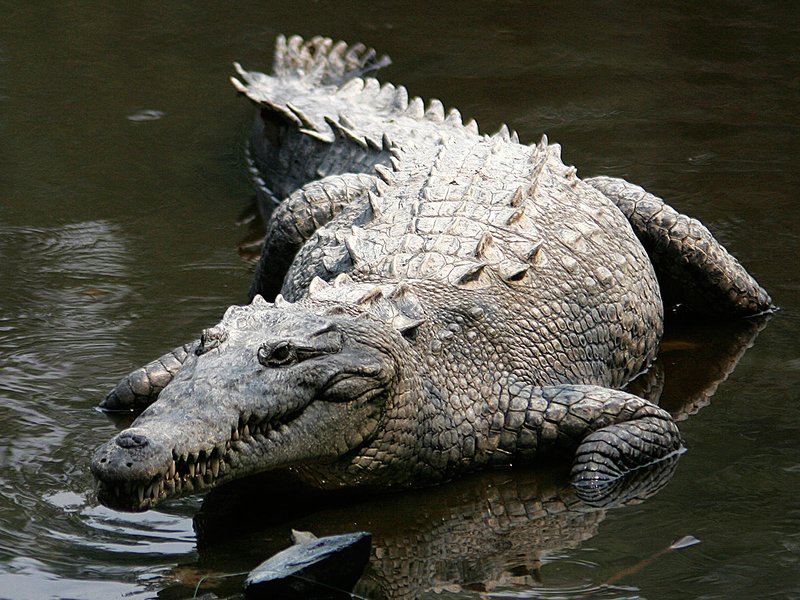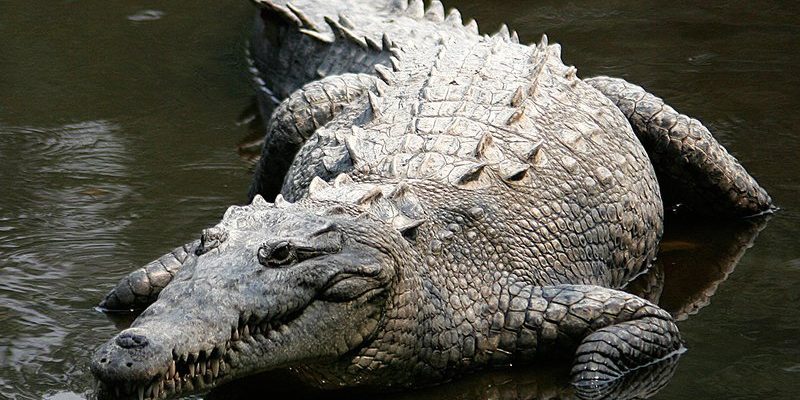
American crocodiles, scientifically known as *Crocodylus acutus*, thrive in warm, coastal regions of the Americas, particularly in places like Florida, Mexico, and the Caribbean. Picture them lounging in the sun by the water’s edge, soaking up some rays before going on a hunt. These reptiles are not just stunning to look at; they have a critical role in keeping their habitats balanced. So, why should we care about crocodiles? Well, understanding their role helps us appreciate nature’s delicate balance and the importance of conservation efforts. After all, every species has a part to play, and crocodiles are no exception.
Where American Crocodiles Live
American crocodiles are typically found in coastal areas, such as brackish waters, lagoons, and rivers. Imagine the lush mangroves of Florida or the serene waters of the Caribbean. These are prime habitats for the crocodile, where they can disappear into the shadows of the trees or bask on sandy beaches. But it’s not just about a pretty view; these environments provide everything the crocodiles need to thrive.
Finding a suitable spot is crucial for any animal. For American crocodiles, their habitats offer excellent hunting grounds and nesting sites. They can often be spotted sunning themselves on riverbanks or lurking beneath the surface, waiting for their next meal. The warm climate is perfect for these cold-blooded reptiles, allowing them to regulate their body temperature effectively. In these ecosystems, they become top predators, playing an essential role in keeping fish and other wildlife populations in check.
The American Crocodile’s Diet and Hunting Techniques
Here’s the thing—American crocodiles are carnivorous and have a diverse diet consisting mainly of fish, birds, and small mammals. Picture them as the local chef, always in search of fresh ingredients for their meals! Their hunting techniques are fascinating: they often use a stealthy approach, gliding silently through the water to ambush their prey. This strategy not only showcases their strength but also highlights their adaptability.
One of the most striking features of the American crocodile is its powerful jaws and sharp teeth. When they catch their food, it’s like a well-rehearsed performance. They grip tightly and can spin their bodies to disorient the prey. It’s both brutal and efficient. This doesn’t just feed the crocodile; it helps maintain the health of their ecosystem. By controlling the population of other species, they prevent overgrazing and promote biodiversity, keeping the whole community thriving.
Social Behavior and Nesting
You might be wondering about the social lives of these reptiles. American crocodiles can be surprisingly social compared to their more solitary cousins. During mating seasons, males can become quite vocal, engaging in displays to attract females. Imagine a dance-off where the prize is a partner for life! Once they mate, females will build nests using vegetation and debris, where they lay their eggs.
Nest-building is more than just a reproductive strategy; it’s an essential step in ensuring the survival of future generations. Females are fiercely protective of their nests, warding off potential threats. After about 80 to 90 days, the eggs hatch, and the mother helps the tiny hatchlings reach the water. This maternal instinct contributes to the continuity of their population, showing how crucial the crocodile is to its natural habitat.
Role in the Ecosystem
American crocodiles play a multi-faceted role in their ecosystems. Think of them as the ultimate multitaskers. By functioning as apex predators, they help maintain the balance of various species. This balance is crucial because when one species thrives unchecked, it can lead to severe consequences for the environment. For example, if fish populations were left uncontrolled, they could deplete essential aquatic vegetation, disrupting the entire habitat.
In addition to regulating prey populations, American crocodiles also contribute to nutrient cycling. As they consume their prey, they help disperse nutrients back into the ecosystem. Their waste provides food for plants and other microorganisms, supporting a diverse range of life. It’s a cycle that showcases how interconnected everything is—like a well-oiled machine, where every part matters.
Conservation Challenges
Unfortunately, American crocodiles face numerous challenges that threaten their populations. Habitat loss due to urban development, pollution, and climate change puts them at risk. Imagine if the city you loved started shrinking, with fewer parks and lakes to play in. That’s what’s happening to their habitats. As humans encroach on these areas, it becomes increasingly difficult for crocodiles to find suitable places to live and breed.
Additionally, hunting and poaching contribute to their declining numbers. Conservation groups and governments are stepping in to protect these magnificent creatures, working to restore habitats and educate the public about their importance. By raising awareness and encouraging ethical behavior, we can help ensure that future generations enjoy the presence of American crocodiles in the wild.
Importance of Education and Awareness
Education plays a vital role in crocodile conservation. When people understand the importance of the American crocodile in its natural habitat, they are more likely to support efforts to protect them. This could involve visiting wildlife reserves, supporting conservation organizations, or even spreading the word about the beauty and significance of these reptiles.
Think of it like this: the more we know about the American crocodile, the more we realize that protecting them is not just about saving a species but preserving an entire ecosystem. Engaging with local communities and providing them with the tools to protect wildlife can create lasting change. Everyone has a part to play—just like in a team sport, where every player contributes to the win.
Final Thoughts
The American crocodile may seem like just another reptile, but its presence in the ecosystem is vital. From regulating fish populations to enriching their habitats, they show us how everything in nature is interconnected. By raising awareness and taking action to protect them, we can help ensure a balanced ecosystem for generations to come. Remember, every creature—big or small—has a role in maintaining the harmony of our world. So, the next time you think about wildlife and conservation, take a moment to appreciate the unique role of the American crocodile in its natural habitat. Let’s work together to keep this incredible species thriving!

